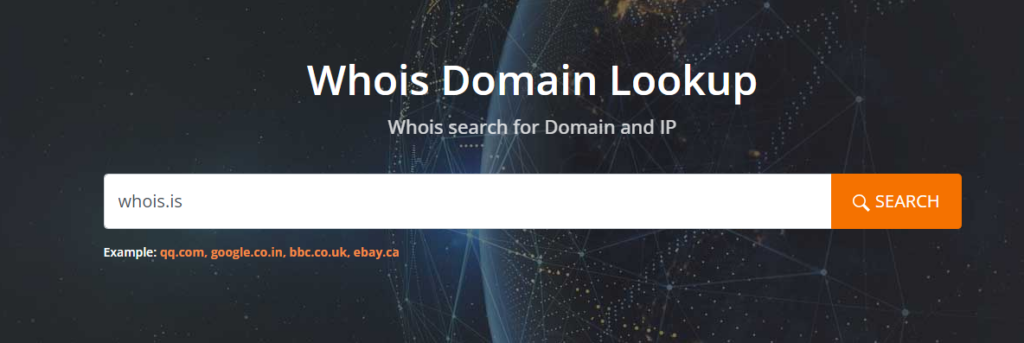WHOIS is a protocol used to find the details of an internet resource such as a domain name or an IP address.
It allows you to trace the ownership and tenure of a domain name, providing information about the registration date, expiration date, ownership and contact information, nameserver information, and the registrar via which the domain was purchased.
WHOIS.COM Lookup Explained
Purpose and Value
WHOIS records have proven to be extremely useful and have developed into an essential resource for maintaining the integrity of the domain name registration and website ownership process.
The data in the WHOIS system has evolved to reinforce the stability and security of the Internet.
It is used by businesses, corporations, law enforcement, and individual users to find out who is behind a domain name and any associated website.
WHOIS.com Information
A WHOIS record contains contact information associated with the person, group, or company that registers a particular domain name.
It typically includes the name and contact information of the registrant, registrar, registration dates, name servers, the most recent update, and the expiration date.
Conducting a WHOIS.COM Lookup
You can conduct a WHOIS.com lookup by entering the domain or IP address for which you would like to conduct a lookup in the search box of a WHOIS.com tool.

The response will provide a recent record of the ownership details and registration information.

Decoding the Whois.com Jargon
Navigating the world of Whois.com lookup can be a daunting task, given the plethora of technical terms and jargon that fill its pages.
To decode this language, let’s embark on a journey to decipher the essential elements of Whois information:
- Domain Registrar: The entity responsible for registering and managing the domain name.
- Registrant: The individual or organization that owns the domain name.
- Contact Information: Details of the person or entity responsible for the domain, including name, address, and email address.
- Creation Date: The date when the domain name was first registered.
- Expiration Date: The date when the domain name ownership expires and must be renewed.
- Name Servers: The servers responsible for translating domain names into IP addresses, directing users to the correct website.
Limitations and Restrictions
There are limitations on the number of queries that can be sent to WHOIS.com servers from the same IP address.
For example, some registrars have set limits on how their WHOIS servers can be accessed, and exceeding these limits may result in restrictions or errors.
Practical Applications of WHOIS.cOM Lookup
The power of Whois lookup extends far beyond mere curiosity. Its applications span a wide spectrum, from protecting intellectual property to identifying cyber threats.
- Protecting Brand Identity: Businesses can use Whois lookup to monitor and enforce their trademarks, preventing unauthorized use of their domain names.
- Identifying Cyber Threats: Cybersecurity professionals use Whois lookup to investigate suspicious domain registrations and potential phishing or spam scams.
- Evaluating Domain Investments: Domain investors use Whois lookup to assess the value and potential of domain names for investment or acquisition.
whois.com API and Tools
There are WHOIS lookup APIs and online tools available to retrieve WHOIS information.
These tools provide ownership records, IP address history, rank, traffic, and SEO information for domains.
Wrap!
In summary, WHOIS is a valuable protocol that provides essential information about domain ownership and registration details.
It is widely used to maintain the integrity of the domain name registration and website ownership process, and it is accessible through various online tools and APIs.
However, users should be mindful of the limitations and restrictions associated with conducting WHOIS lookups to avoid potential issues with query limits.
